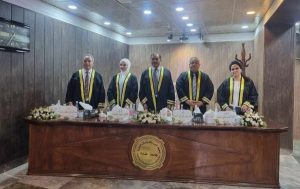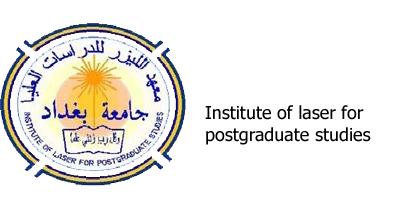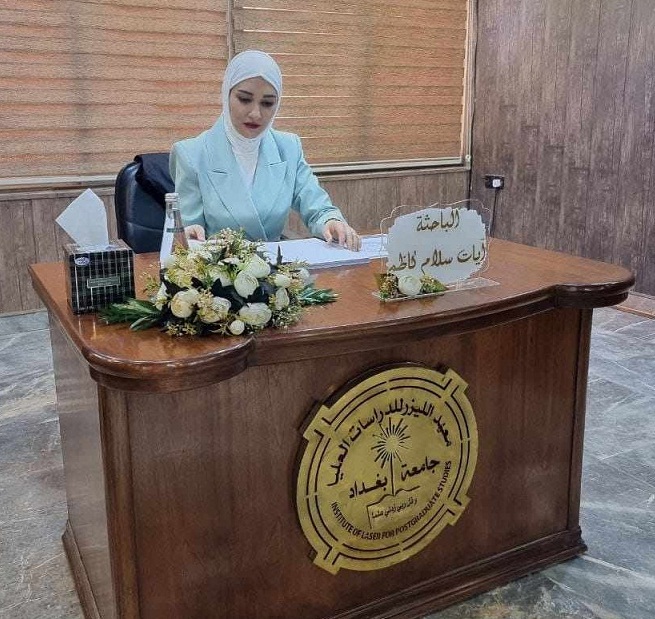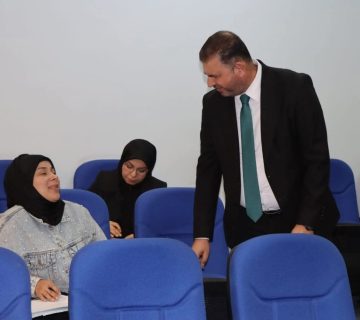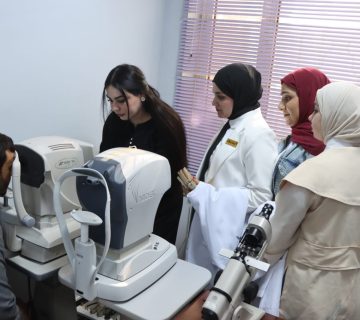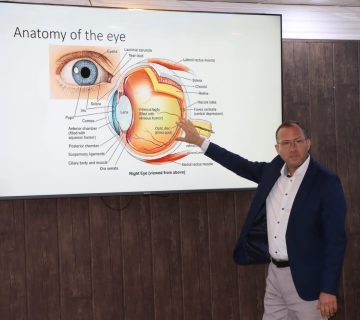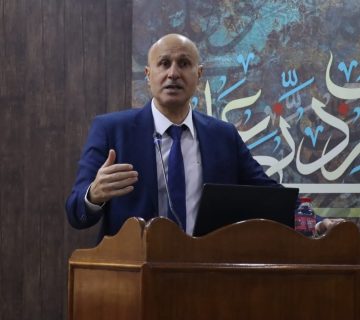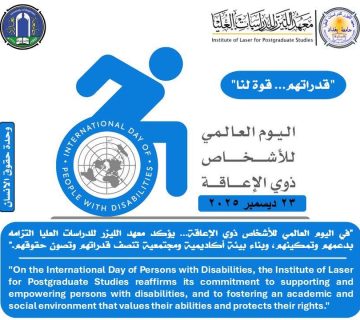The thesis of the master’s student , Ayat Salam Kadhm / Laser Applications was discussed,
Her Thesis is entitled:
Temperature control during co2 laser Debonding of lithium Disilicate Veneers
The discussion committee consisted of the professors whose names are listed:
1-Prof. Dr.Raghad Abd Al Razaq /PhD in Maxillofacial surgery/ college of dentistry/University of Baghdad / as a Chairman
2- Prof. Dr.Khadum Abd Hubater / PhD in applied science/ University of technology / as a Member
3- Asst. Prof. Dr Basema Mohammed Ali /PhD in Maxillofacial surgery/Institute of laser for Postgraduate Studies / University of Baghdad /as a Member
4- Prof. Dr.Abd Al Hadi Mutasher Abd/ PhD in physics / Institute of laser for Postgraduate Studies / University of Baghdad/ as a Member and Supervisor
Background: Keeping the tooth vital and undamaged during the lithium disilicate veneer debonding using laser, temperature control, and underlined tooth safety is of utmost importance in aesthetic restorative dentistry.
Aim of the study: Debonding of lithium disilicate veneers using 10600 nm CO₂ laser with temperature rise control and shorter debonding time.
Materials and methods: sixty-four sound human premolar teeth prepared for 64 veneer specimens of lithium disilicate (6*4 mm and 0.7 mm thickness) were used. First the FTIR test was performed for the lithium disilicate material (IPS e.max press) and the resin cement to know the absorption of CO₂ laser through these materials. The study was divided into two parts. The first is comprising 36 teeth divided into three subgroups (n=12) irradiated with three CO₂ CW laser powers 1 W, 2 W, and 3 W at (24, 9, 5 sec) debonding time respectively for temperature change measurement, the debonding of lithium disilicate veneer was performed manually by using dental explorer. In the second part, the shear bond strength test was carried out for 28 teeth divided into four subgroups (n=7); three groups were subjected to the same previous laser power and irradiation time parameters plus the control group without laser irradiation. CO₂ laser irradiation was applied using a zigzag configuration via laser handpiece movement along with a cold air jet to prevent temperature elevation above the necrosis temperature limit (5.5°C) were applied. After the SBS test, 20 samples subjected to ARI to assess the type of failure mode. Also the AFM test was performed for three samples to evaluate the enamel surface roughness after veneer debonding. The FTIR spectroscopy was carried out for the sound enamel, the enamel after veneer debonding and cement removal to estimate any changes in the chemical composition due to laser irradiation.
Results: The FTIR test show that the veneer absorb 64% and the resin cement absorb about 24% of CO₂ laser power. 34 veneer from total 36 sample of the first part of the study were successfully debonded by dental explorer. The debonding irradiation time was five seconds at 3 W CO₂ laser power and the temperature remained within the normal limits for all groups. The SBS showed significant decrease after laser irradiation with increasing the laser power. The ARI results showed that the type of failure mode in the most of laser groups was cement to veneer adhesive. AFM spectroscopy revealed non-significant difference in roughness value between sound enamel and after treatment. The FTIR of the sound enamel and after veneer debonding showed no significant changes in the chemical composition of essential enamel structure.
Conclusion: The fast deboning process with sub necrotic temperature level and non-significant change in enamel roughness and chemical composition reflects the high potential of CO₂ laser in veneers debonding. To the best of the authors’ knowledge, a CW CO₂ 10600 nm laser was utilized for the first time to debond lithium disilicate veneers (e.max) from the enamel surface in 5 seconds at 3 W laser power.
